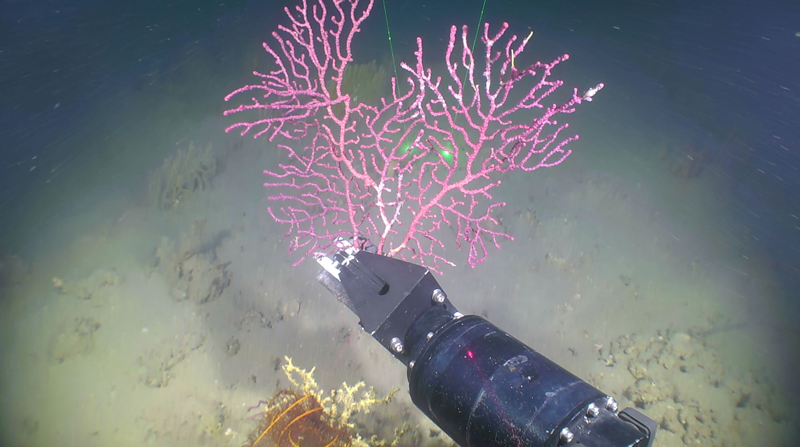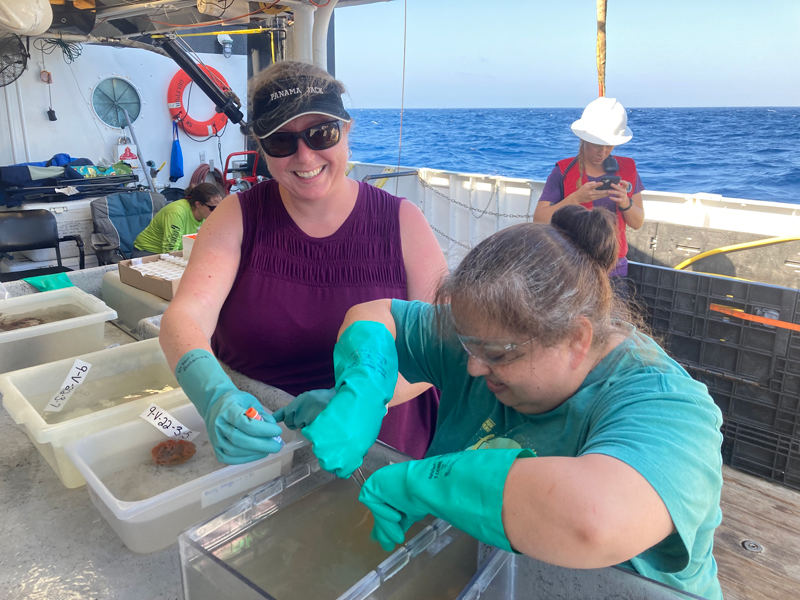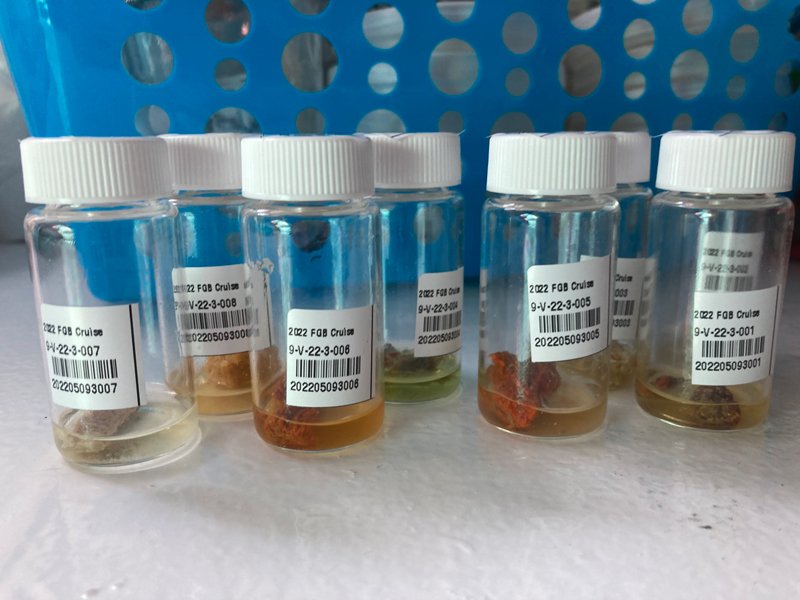Why Are We Collecting DNA From the Seafloor?
One of the things we are doing on this expedition is preserving the DNA of each marine organism we collect. Our group is interested in finding marine natural products that can be used as medicines against many diseases.

We get very excited when we find a chemical with medicinal properties. The hard part is to produce more of these compounds. Although we would like to go back to sea, it still would be difficult to collect enough samples to produce all the material required for testing and production of a novel medicine.
Here is where the DNA collection comes in. All living organisms store the information of who they are using four special sugars called nucleotides that come together to form deoxyribonucleic acid, better known as DNA. Think of DNA as the blueprint of life. It dictates whether you have brown eyes or blue, or whether you are tall or short. The sequence that defines one of those features is called a gene. Marine invertebrates and bacteria are just like us, and in their DNA we can find the genes that result in the production of some of the marine natural products that we will identify from the organisms collected during this expedition.
We can determine which genes are needed to make each compound. A group of such genes is called a biosynthetic gene cluster. After identifying the correct genes, we transfer them into bacteria that grow very fast and make the compound for us. Finally, we can modify the genes to get different versions of the compound, which could produce better medicines. Gene clusters for many compounds have been identified already. We hope to do the same for interesting compounds obtained from the marine organisms collected on this expedition.


By Esther Guzmán, Florida Atlantic University - Harbor Branch Oceanographic Institute
Published May 12, 2022